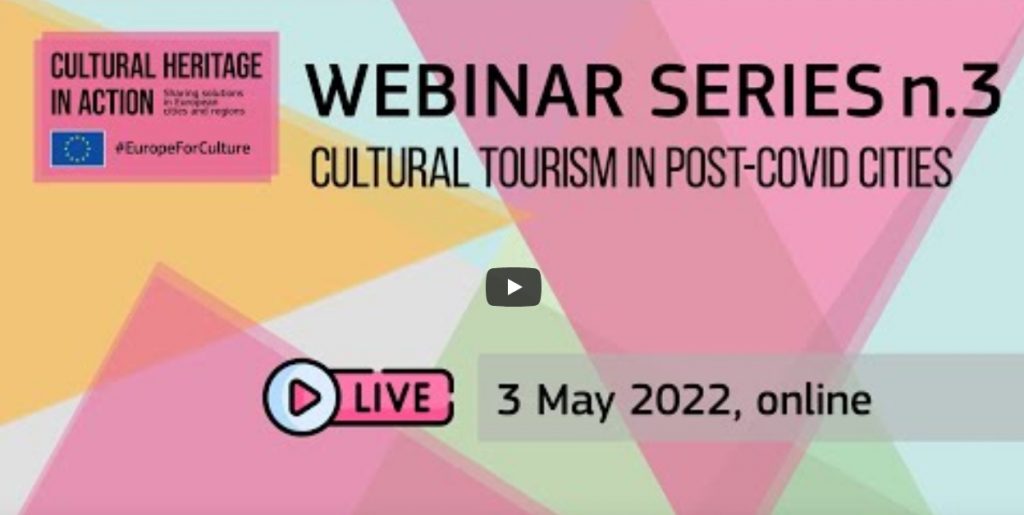Cultural tourism in post-Covid cities
The webinar “Cultural tourism in post-Covid cities” was organized last 3 May as part of the Cultural Heritage in Action sharing stories webinar series with the objective of exploring new trends in cultural tourism in cities after the pandemic. The webinar was moderated by Julie Hervé, Eurocities, with the participation of our partner Prof. Jan van der Borg (visiting professor in tourism management at KU Leuven and professor in applied economics at the University Ca’Foscari of Venice) who shared current trends in urban tourism, Carlotta Viviani (Economic and Tourism Promotion Department Municipality of Florence) who presented the case of study of the city of Florence and Pellervo Kokkonen, (Senior advisor and CEO at Savonlinna Travel Ltd) who presented the case study of the city of Savonlinna.
Here you can watch the recording:
A vibrant local cultural life and the presence of cultural heritage sites encourage people to travel: four in ten tourists already choose their destination on the basis of its cultural offering. Tourism is one of cities’ major economic assets. It contributes to the local economy, and generates jobs and social added value, but can also generate downsides: over-tourism, tensions with locals, pressure on the use of public services and on housing prices. There is a clear need to strike a balance between economic, social, cultural and environmental needs, including the protection of cultural heritage, to ensure the mid and long-term sustainability of tourism. While Europeans are starting to travel again, planning recreational and cultural activities, now is a good moment to reflect on urban tourism and developing practices, to address changing consumer needs and develop local policies and projects for more resilient, digital, and greener practices. How to develop a more sustainable cultural tourism in cities and regions, taking into account sustainability and environmental issues? Are there new practices developing in European cities and regions? These are the questions at the heart of the discussion.
Case study of Florence:
In Florence (IT, 366 000 inhabitants), the Feel Florence experience app brings tourists off the beaten track. Thanks to a real-time detection of the presences in certain areas, the app warns tourists to avoid overcrowded destinations and suggests unusual itineraries in the city centre, in neighbourhoods and in the metropolitan area. The app is a tool to avoid over-tourism in central areas of the city, where the management of crowds is a key challenge. 15.9 million people visited Florence in 2019, most of them focus on the historic centre, which is a 5km2 area in a city of 105km.
Case study of Savonlinna:
In Savonlinna (FI, 36 000 inhabitants), a recovery programme rescued the tourism dependent city and fosters innovation in tourism offers. Local policy makers quickly reacted to counter the effects of the pandemic on tourism in the city and to the need to compensate for the cancellation of large-scale events such as the Savonlinna Opera Festival (60 000 annual visitors). This included micro-grants to support innovative tourism products, more flexible weekly tourist programmes and support for pop- up events. This resulted in an increase overnight stays and national media visibility.


